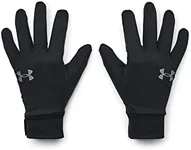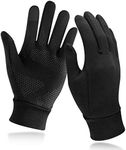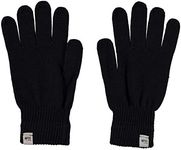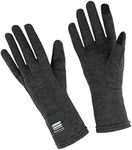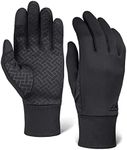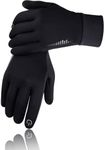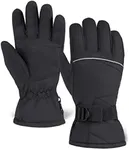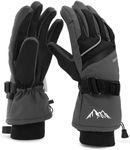Buying Guide for the Best Glove Liners
Glove liners are an essential accessory for anyone who spends time outdoors in cold weather. They provide an extra layer of insulation, helping to keep your hands warm and comfortable. When choosing glove liners, it's important to consider several key specifications to ensure you get the best fit and performance for your needs. Here are the main factors to consider when selecting glove liners.MaterialThe material of glove liners is crucial because it affects warmth, comfort, and moisture-wicking properties. Common materials include wool, synthetic fibers, and silk. Wool is excellent for warmth and moisture-wicking but can be bulky. Synthetic fibers like polyester or nylon are lightweight, quick-drying, and often more affordable. Silk is lightweight and comfortable but may not be as warm. Choose a material based on your activity level and the conditions you'll be facing. For high-intensity activities, synthetic fibers might be best, while wool or silk could be better for lower-intensity or very cold conditions.
ThicknessThickness determines the level of insulation and how well the liners fit under your outer gloves. Thicker liners provide more warmth but can make your gloves feel tight and reduce dexterity. Thinner liners offer better dexterity and fit but may not be as warm. Consider the balance between warmth and dexterity you need. If you need to perform tasks that require fine motor skills, opt for thinner liners. For extremely cold conditions where warmth is a priority, thicker liners might be more suitable.
FitA proper fit is essential for comfort and effectiveness. Glove liners should fit snugly without being too tight, as tight liners can restrict blood flow and reduce warmth. They should also not be too loose, as this can cause bunching and reduce dexterity. To find the right fit, measure your hand and refer to the sizing guide provided by the manufacturer. Consider trying on the liners with your outer gloves to ensure they work well together.
Moisture-WickingMoisture-wicking properties are important to keep your hands dry and comfortable. When you sweat, moisture-wicking materials pull the sweat away from your skin and allow it to evaporate, preventing your hands from becoming cold and clammy. Look for glove liners made from materials like merino wool or synthetic fibers that are known for their moisture-wicking abilities. This is especially important for high-intensity activities or if you tend to sweat a lot.
Touchscreen CompatibilityIn today's digital age, touchscreen compatibility can be a valuable feature. This allows you to use your smartphone or other touchscreen devices without having to remove your gloves. Look for glove liners with conductive materials on the fingertips if you need to use your devices frequently. This feature is particularly useful for those who need to stay connected or use GPS devices while outdoors.
DurabilityDurability is important to ensure your glove liners last through multiple uses and conditions. Check for reinforced areas, especially on the fingertips and palms, which are prone to wear and tear. High-quality materials and good construction will contribute to the longevity of the liners. If you plan to use the liners frequently or in rugged conditions, prioritize durability to get the most value out of your purchase.



